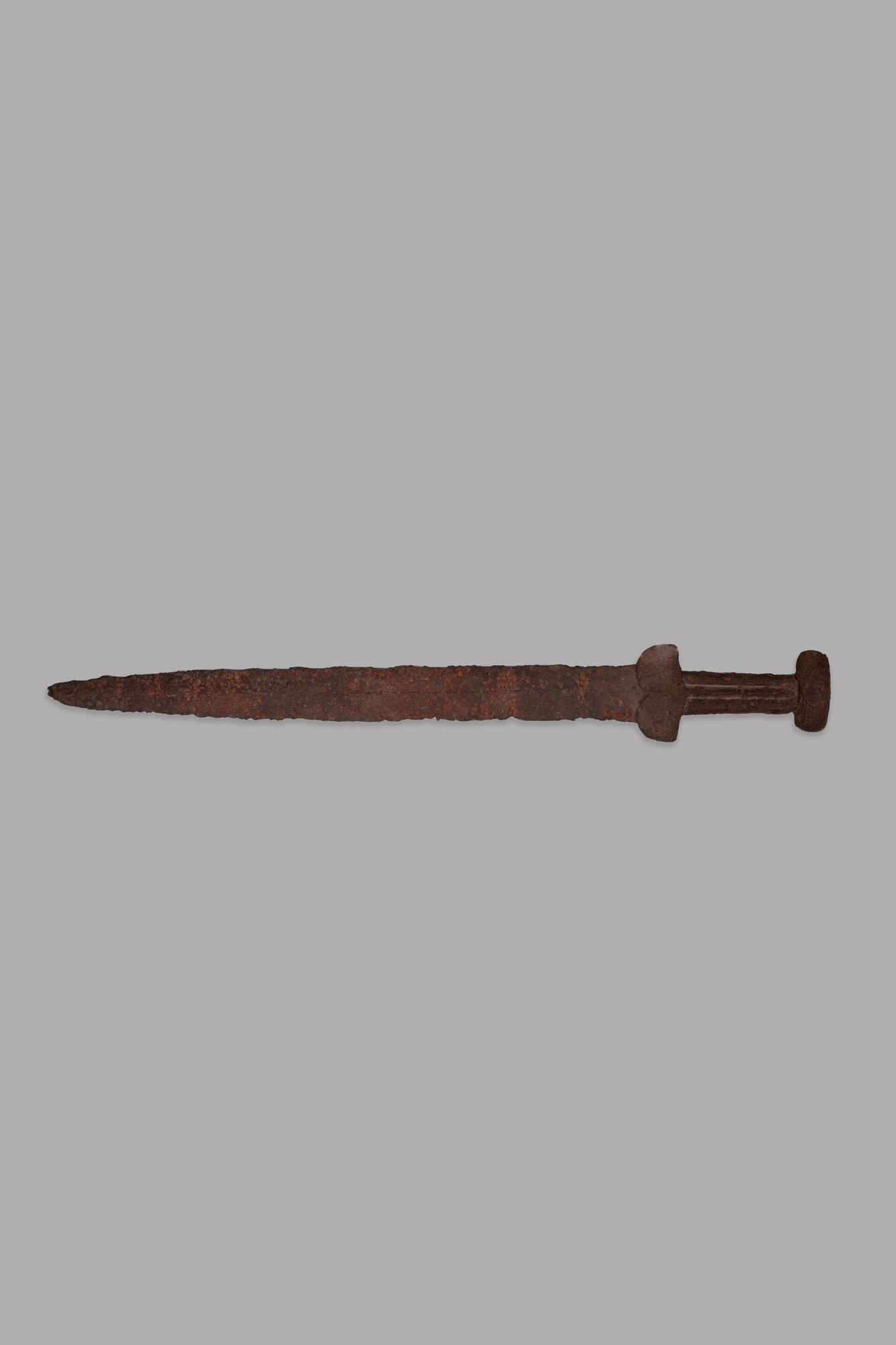The collection of the local history museum includes eight Scythian swords — acinaces. All of them were found on the territory of the Lipetsk region and date back to the first millennium BC, which means that Scythian tribes used to live in that territory at that time. The Scythians were warlike nomads who dominated the southern steppes between the Danube and the Don in the period from the 8th to the 3rd century BC.
One of the swords was discovered in 2007 in the village of Nikolskoye, Usmansky district, by the schoolboy Mikhail Simakov, who was working in the garden. Thanks to the archaeologist and historian Alexander Nikolaevich Bessudnov, the find did not end up in private collections, but was transferred to the Lipetsk Regional Museum of Local Lore. The acinaces is very well preserved.
The total length of the blade and the handle with the pommel is 51 cm. The sword has a bar-shaped massive oval pommel with dimensions of 2×5.3×2.5 cm. It was forged together with the base of the handle from one blank and a stiffener was used.
The sword dates from the middle of the 7th century BC. The acinaces was used not only as a weapon — it also emphasized the owner’s high status and was used for pagan rituals. The Greek historian Herodotus (5th century BC) left a detailed description of the Scythian sacrifice to the god of war.
He wrote that “in every district” special sanctuaries were erected: “a pile of fagots of sticks three furlongs broad and long (about 600 m), but of a less height, on the top of which there is a flattened four-sided surface… In every year a hundred and fifty waggon-loads of sticks are heaped upon this; for the storms of winter ever make it sink down. On this pile there is set for each people an ancient scimitar of iron, which is their image of Ares; to this scimitar they bring yearly sacrifice of sheep and goats and horses, offering to these symbols even more than they do to the other gods. Of all their enemies that they take alive, they sacrifice one man in every hundred.”
Most of the Scythian blades that were found in the Don region are random finds. Scientists have not established any link to any ancient settlements. All this allows us to say that the owners lost them during the resettlement or military campaign. It is not possible to establish whether the swords were part of cult rituals.
One of the swords was discovered in 2007 in the village of Nikolskoye, Usmansky district, by the schoolboy Mikhail Simakov, who was working in the garden. Thanks to the archaeologist and historian Alexander Nikolaevich Bessudnov, the find did not end up in private collections, but was transferred to the Lipetsk Regional Museum of Local Lore. The acinaces is very well preserved.
The total length of the blade and the handle with the pommel is 51 cm. The sword has a bar-shaped massive oval pommel with dimensions of 2×5.3×2.5 cm. It was forged together with the base of the handle from one blank and a stiffener was used.
The sword dates from the middle of the 7th century BC. The acinaces was used not only as a weapon — it also emphasized the owner’s high status and was used for pagan rituals. The Greek historian Herodotus (5th century BC) left a detailed description of the Scythian sacrifice to the god of war.
He wrote that “in every district” special sanctuaries were erected: “a pile of fagots of sticks three furlongs broad and long (about 600 m), but of a less height, on the top of which there is a flattened four-sided surface… In every year a hundred and fifty waggon-loads of sticks are heaped upon this; for the storms of winter ever make it sink down. On this pile there is set for each people an ancient scimitar of iron, which is their image of Ares; to this scimitar they bring yearly sacrifice of sheep and goats and horses, offering to these symbols even more than they do to the other gods. Of all their enemies that they take alive, they sacrifice one man in every hundred.”
Most of the Scythian blades that were found in the Don region are random finds. Scientists have not established any link to any ancient settlements. All this allows us to say that the owners lost them during the resettlement or military campaign. It is not possible to establish whether the swords were part of cult rituals.



